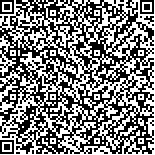本文已被:浏览 965次 下载 1300次
Received:March 01, 2019 Revised:March 29, 2019
Received:March 01, 2019 Revised:March 29, 2019
中文摘要: 为解决裂隙灯转鼓装校时,人眼对转鼓图像清晰度的评价存在不确定性等问题,提出一种基于清晰度评价算法的转鼓数字化装校方法,以提高转鼓质量.通过研究目前比较主流的图像清晰度评价算法,选取与主观评价符合程度较好的几种算法,采用合适的图像预处理方法,编写程序对转鼓图像进行实际测试.模拟转鼓装校生产线上相机焦距变化、转鼓放大倍率变化、光照变化因素的影响,设计了三组实验,从算法的单峰性、无偏性、灵敏性与实时性四个方面对计算结果进行对比和分析.结果表明,筛选出来的算法能够在不同倍率,不同光照下对转鼓图像进行准确的清晰度评价,且能够满足生产线上的实时性要求.
Abstract:While installation of the slit lamp drum, there are some problems such as uncertainty in the evaluation of the clarity of the drum image by the human eye. In order to solve these problems, a digital correction method based on the definition evaluation algorithm is proposed to improve the drum quality. By studying the current mainstream image sharpness evaluation algorithm, several algorithms that are in good agreement with the subjective evaluation are selected, and some appropriate preprocessing method are used to process the image. Finally, the program is written to test the drum image. Three sets of experiments are designed to simulate the focal length change of the camera, the change of drum magnification, and the influence of illumination variation on the algorithm on the production line. The calculation results are compared and analyzed from four aspects: unimodality, unbiasedness, sensitivity, and real-time. The results show that the selected algorithm can accurately evaluate the drum image under different magnifications and different illuminations, and can meet the real-time requirements of the production line.
文章编号: 中图分类号: 文献标志码:
基金项目:江苏省产学研前瞻性联合研究项目(BY2015003-03)
引用文本:
江俊佳,沈建新,韩鹏.裂隙灯转鼓数字化装校方法研究.计算机系统应用,2019,28(9):232-238
JIANG Jun-Jia,SHEN Jian-Xin,HAN Peng.Research on Digital Mounting Method of Slit Lamp Rotating Drum.COMPUTER SYSTEMS APPLICATIONS,2019,28(9):232-238
江俊佳,沈建新,韩鹏.裂隙灯转鼓数字化装校方法研究.计算机系统应用,2019,28(9):232-238
JIANG Jun-Jia,SHEN Jian-Xin,HAN Peng.Research on Digital Mounting Method of Slit Lamp Rotating Drum.COMPUTER SYSTEMS APPLICATIONS,2019,28(9):232-238


